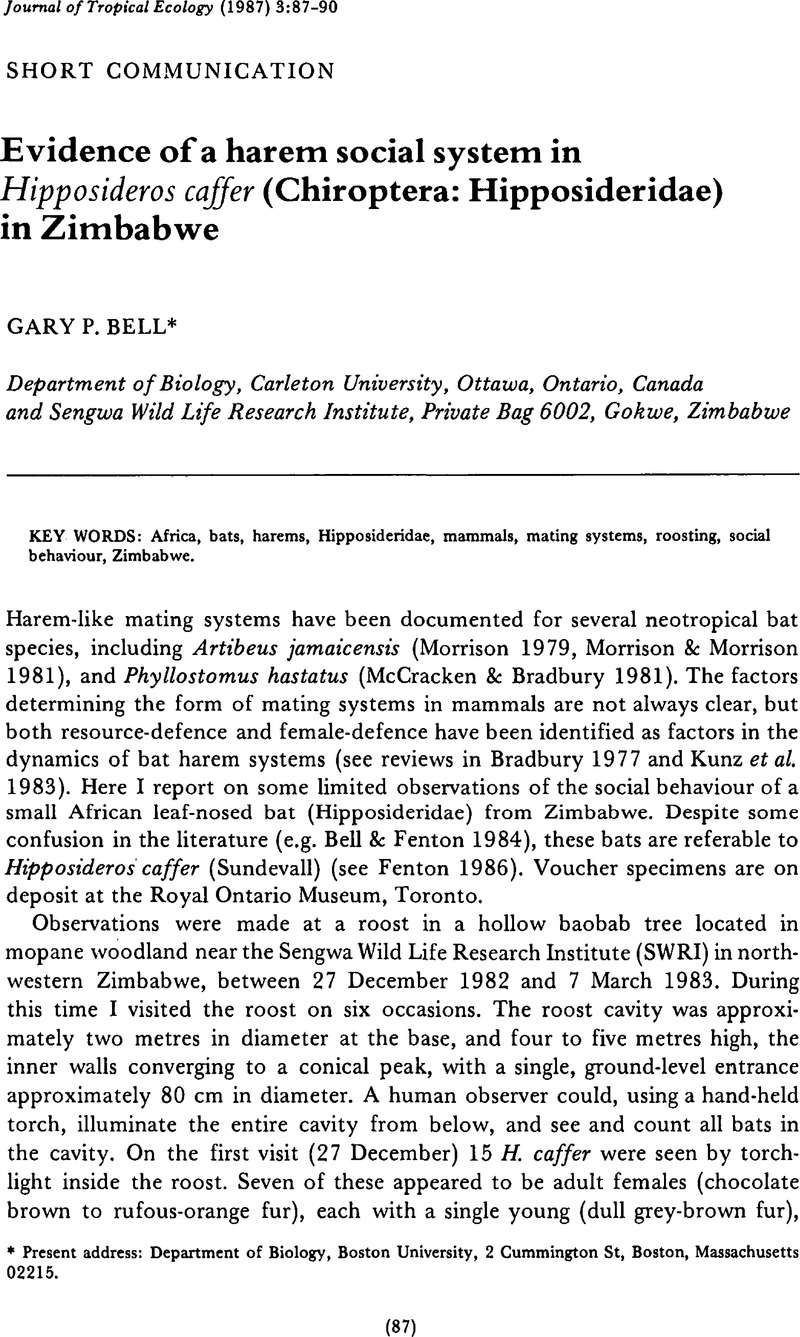Crossref Citations
This article has been cited by the following publications. This list is generated based on data provided by Crossref.
Wright, Genevieve Spanjer
2009.
Hipposideros caffer (Chiroptera: Hipposideridae).
Mammalian Species,
Vol. 845,
Issue. ,
p.
1.
Nkrumah, Evans E.
Vallo, Peter
Klose, Stefan M.
Ripperger, Simon
Badu, Ebenezer K.
Drosten, Christian
Kalko, Elisabeth K. V.
Tschapka, Marco
and
Oppong, Samuel K.
2016.
Home Range of Noack's Round-Leaf Bat (Hipposiderosaff.ruber) in an Agricultural Landscape of Central Ghana.
Acta Chiropterologica,
Vol. 18,
Issue. 1,
p.
239.
Hex, Severine B. S. W.
Tombak, Kaia
and
Rubenstein, Daniel I.
2021.
A new classification of mammalian uni-male multi-female groups based on the fundamental principles governing inter- and intrasexual relationships.
Behavioral Ecology and Sociobiology,
Vol. 75,
Issue. 11,



